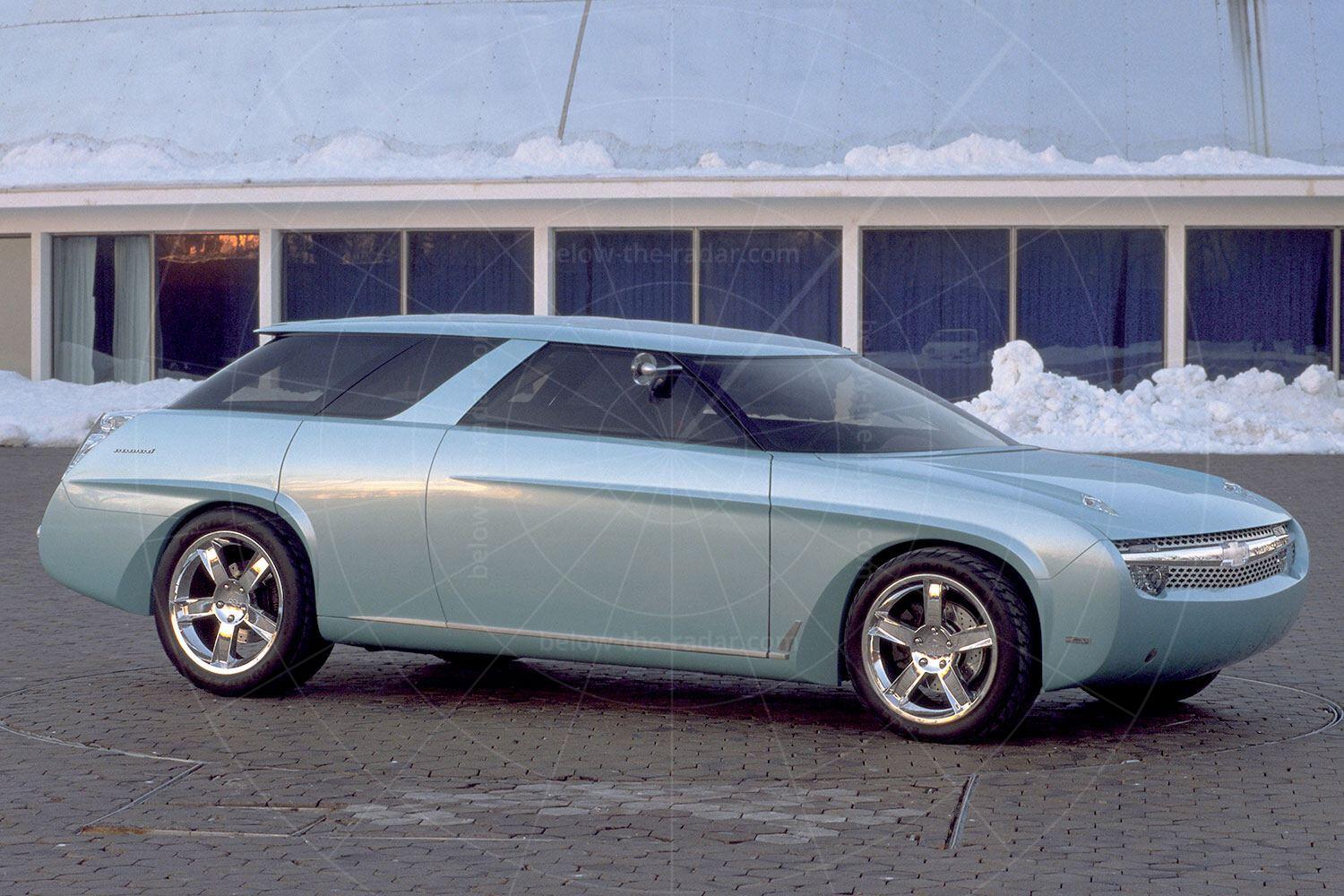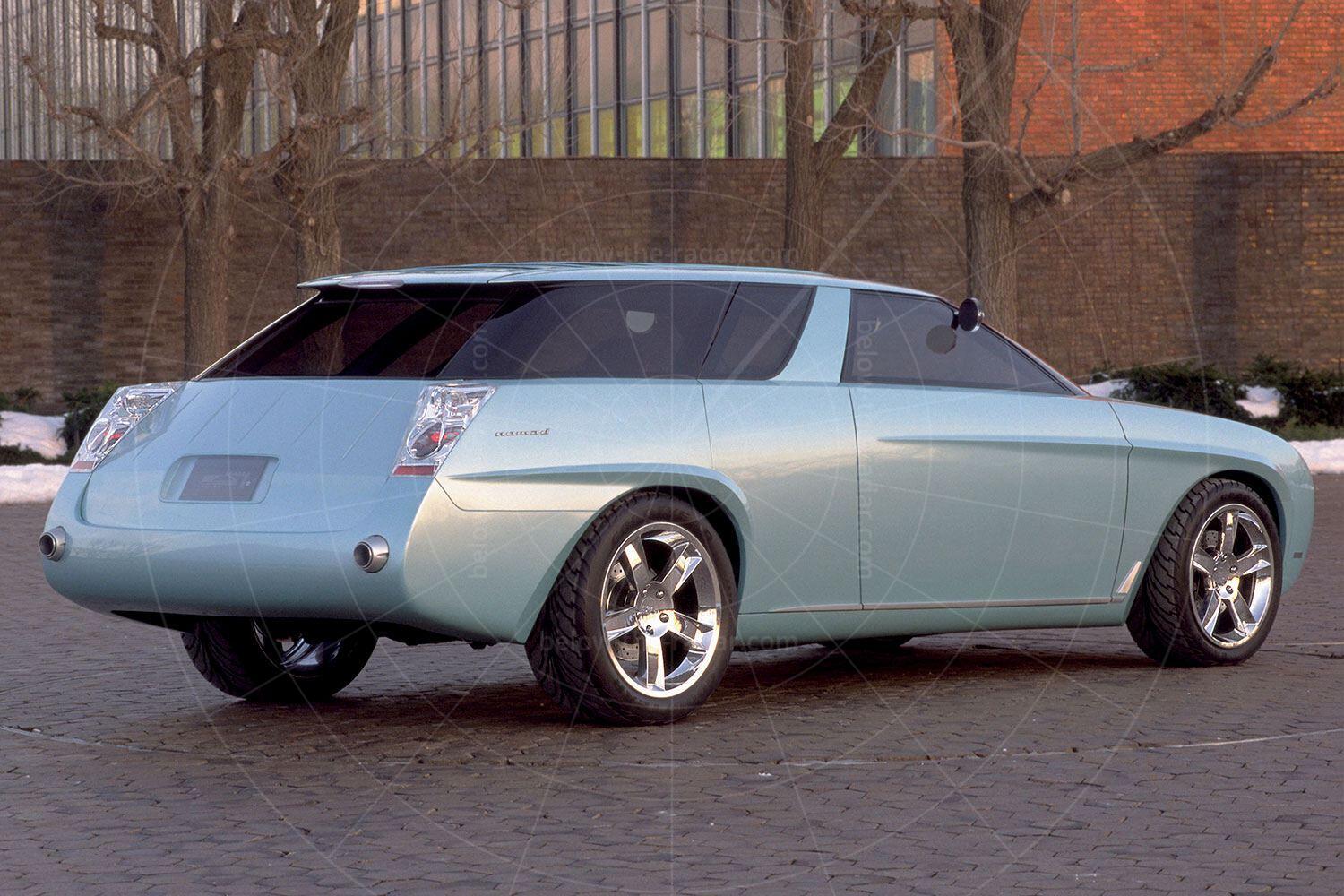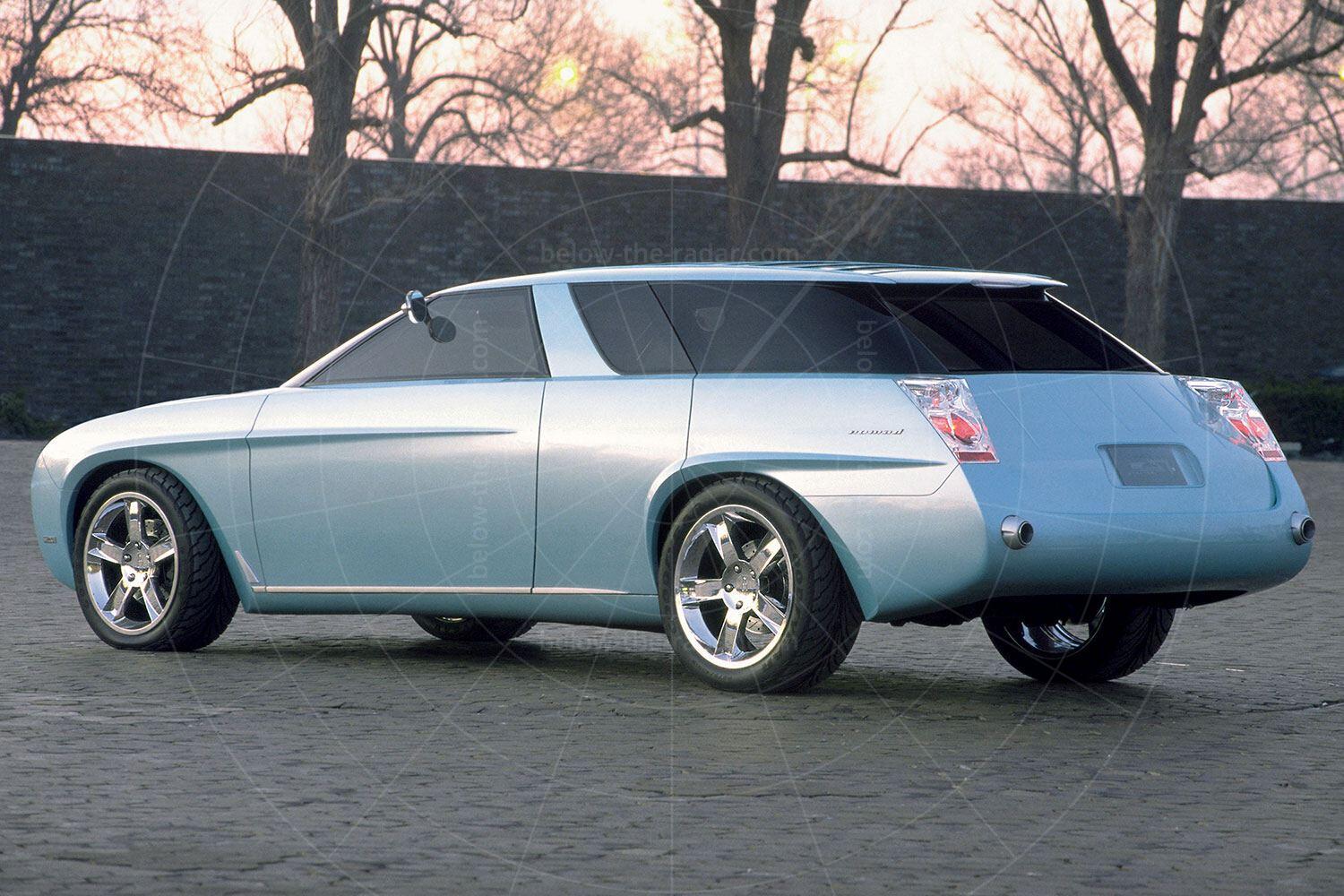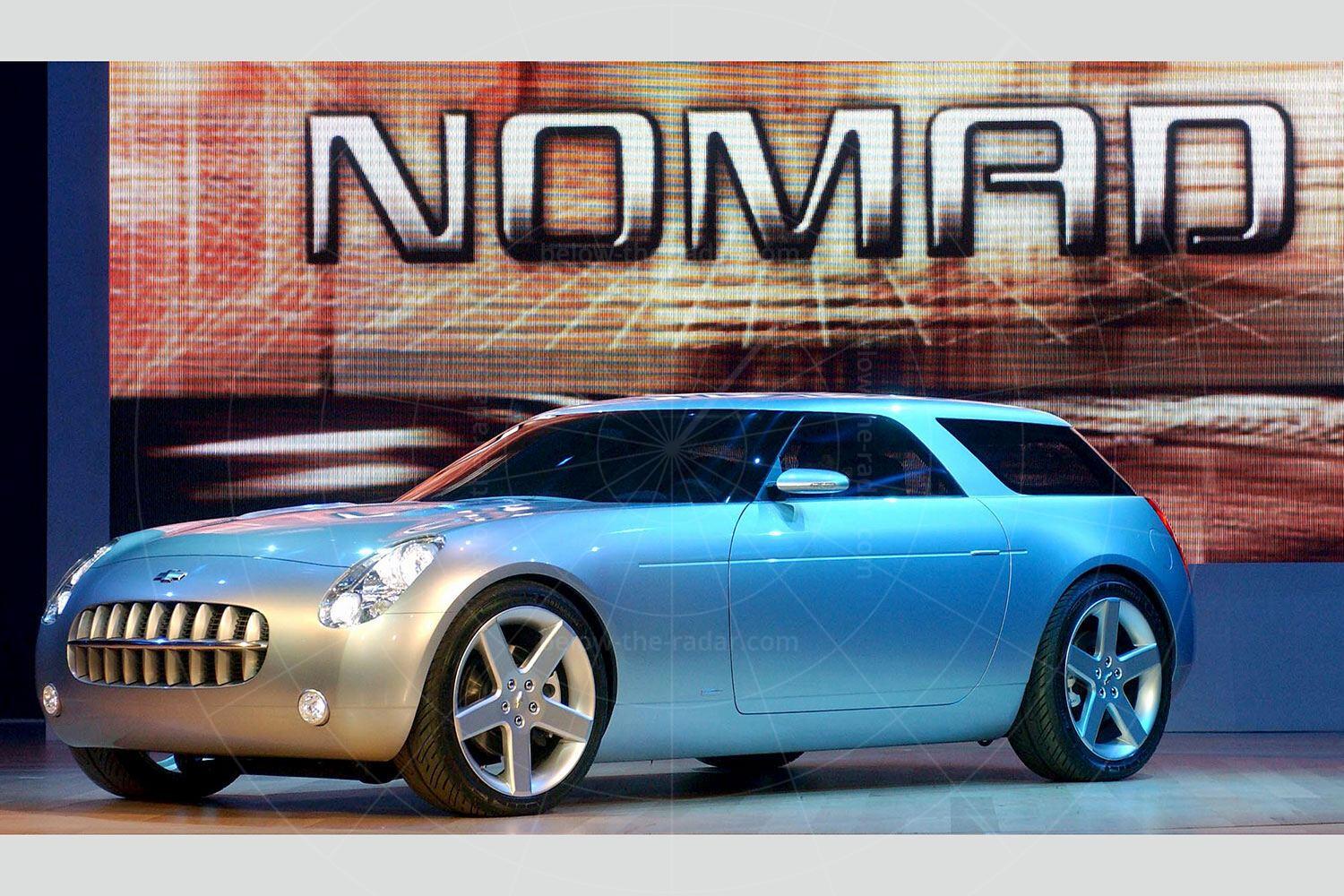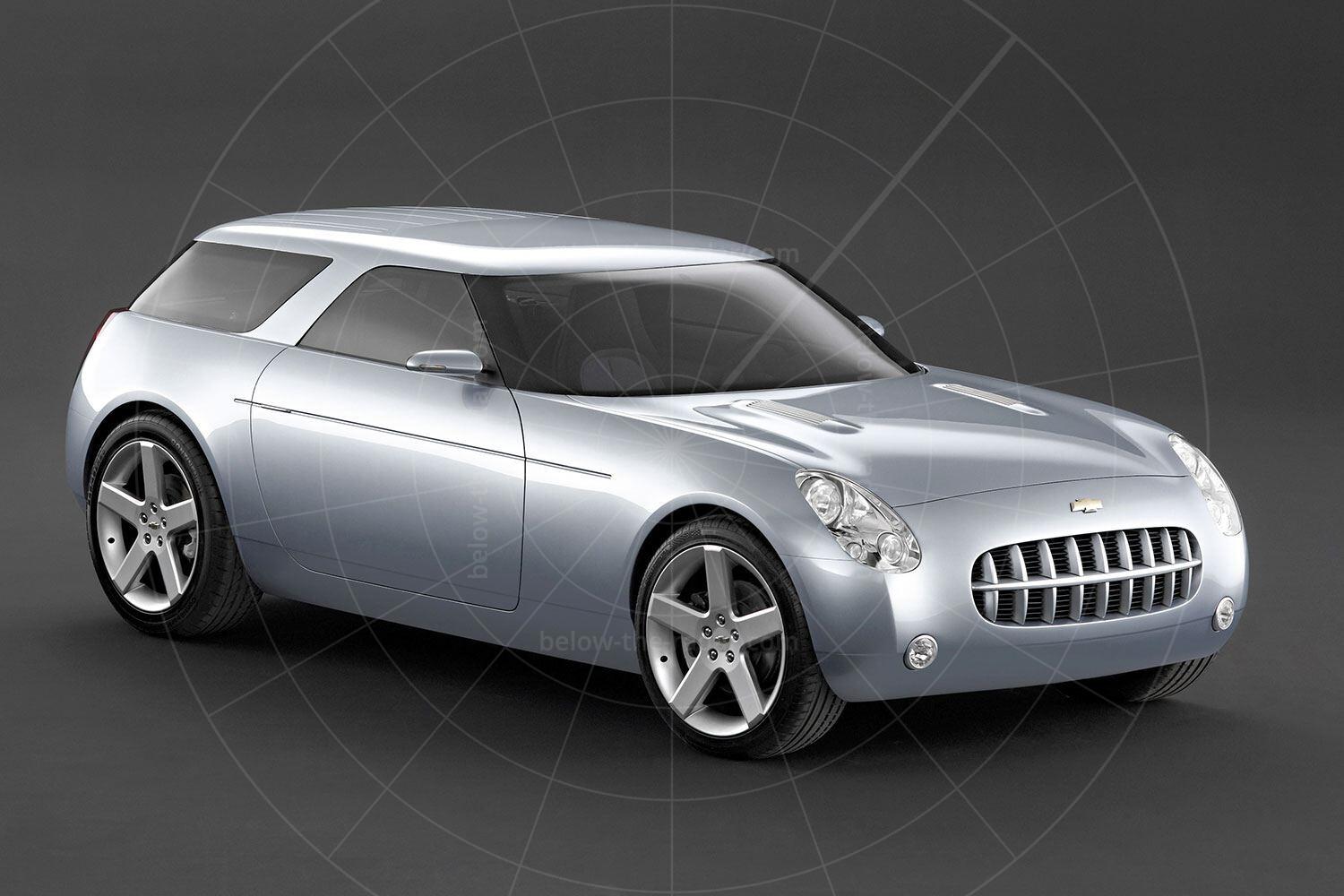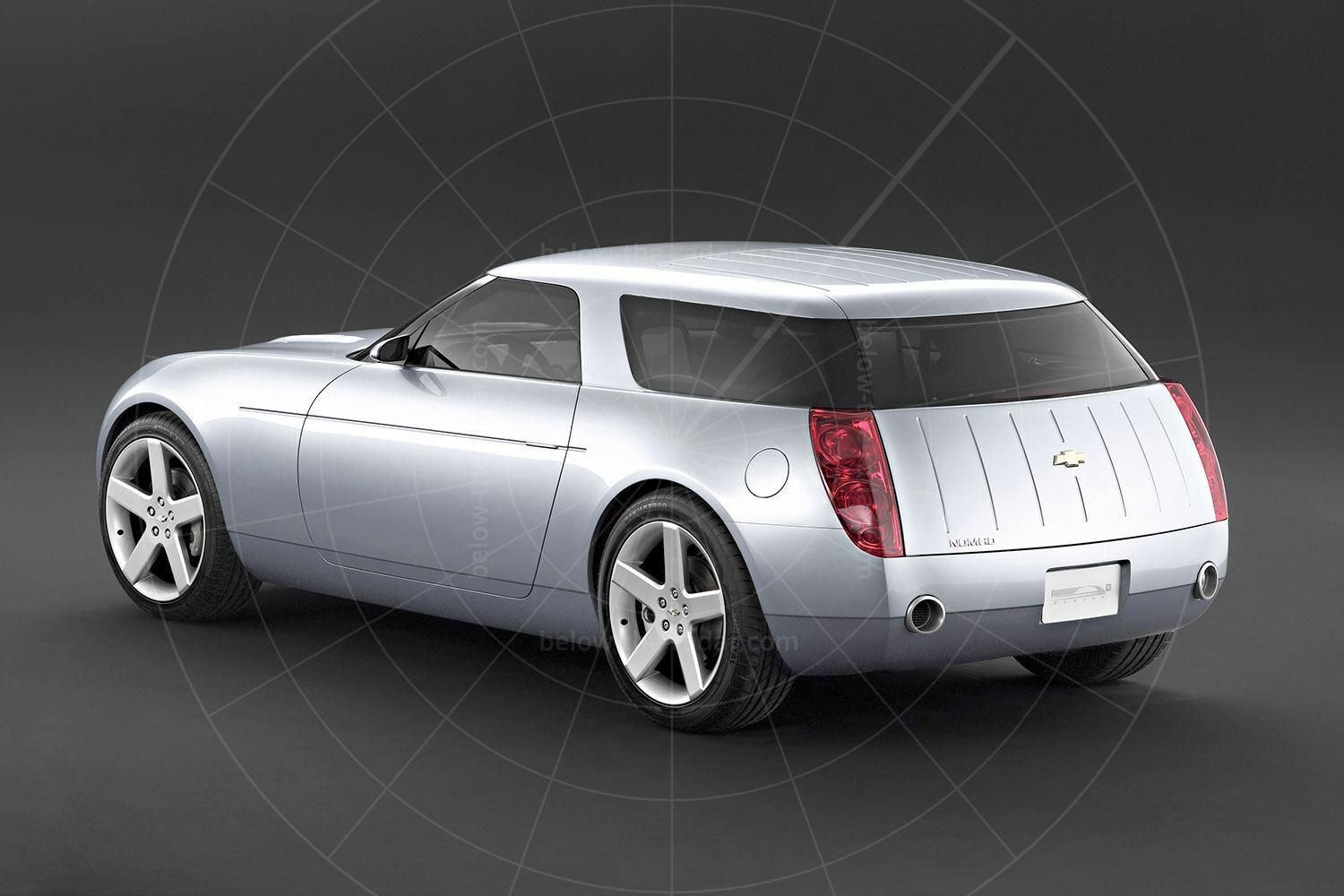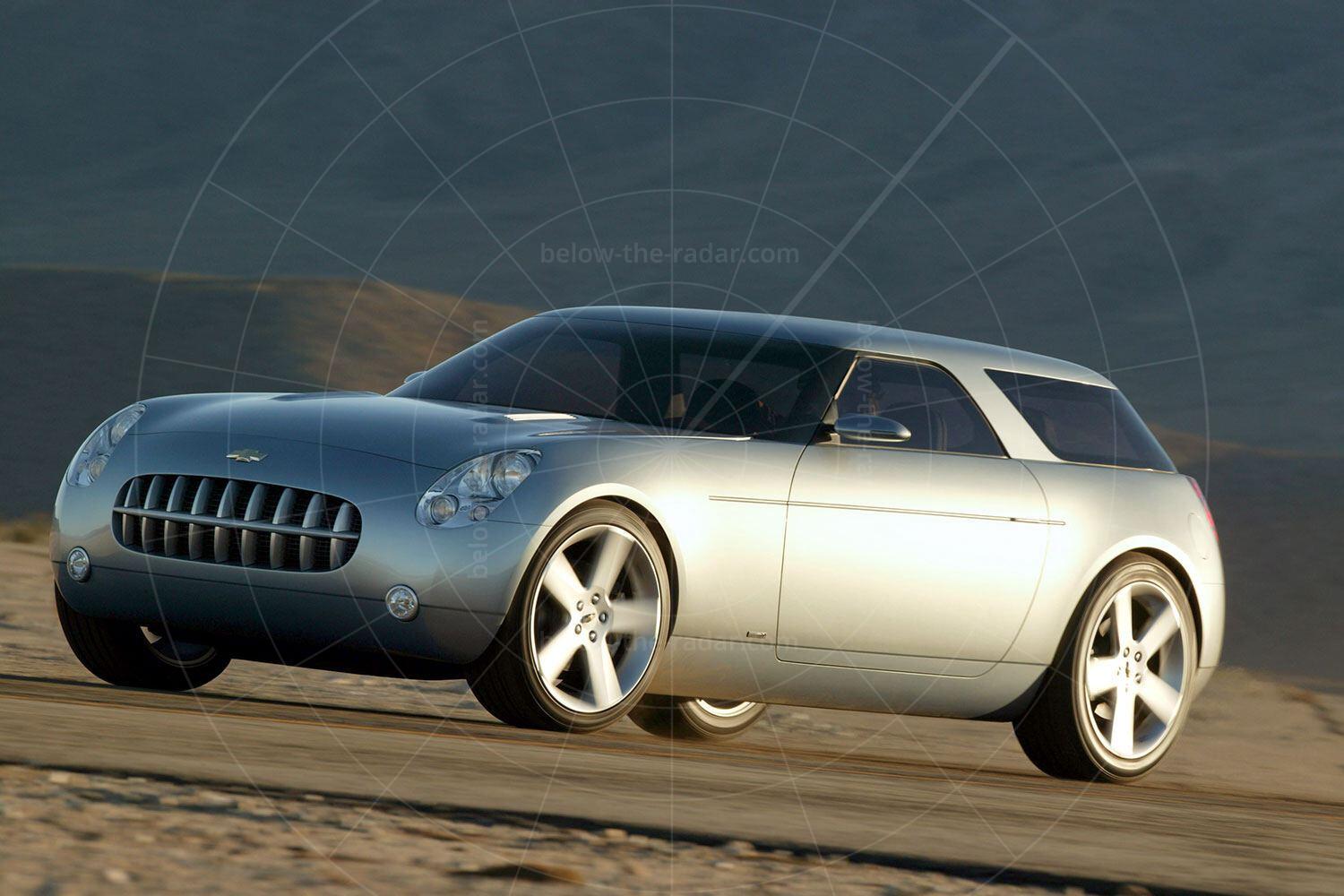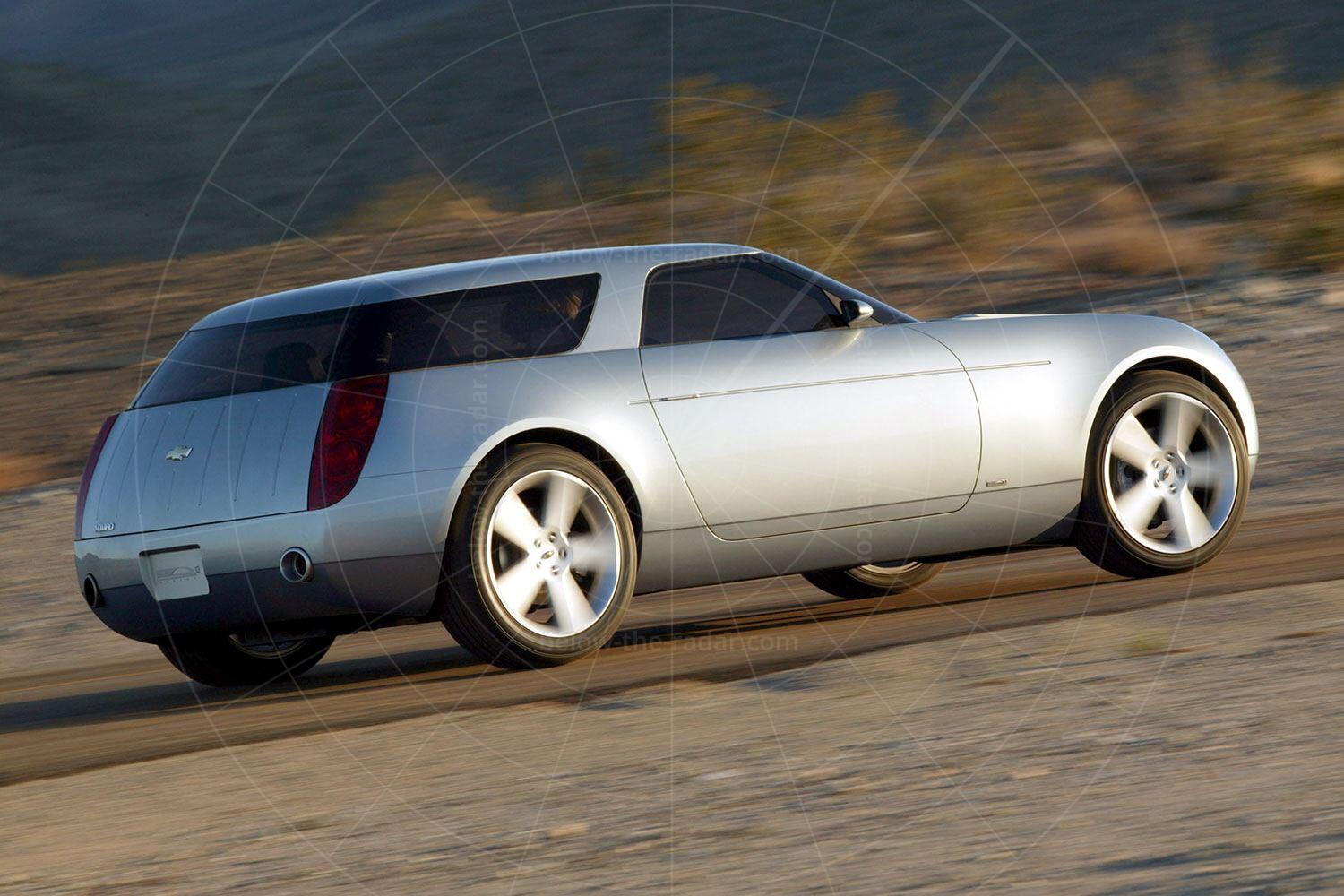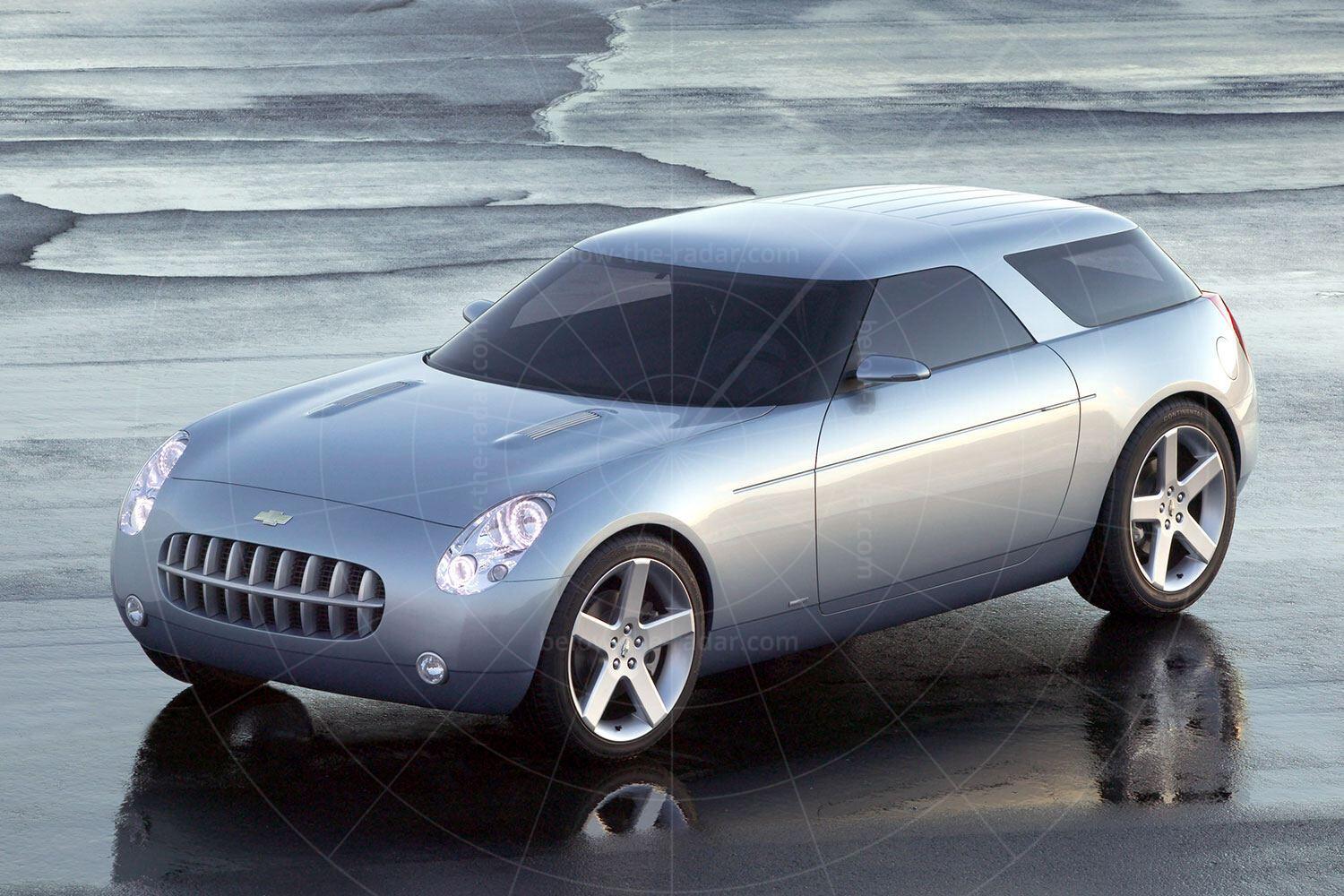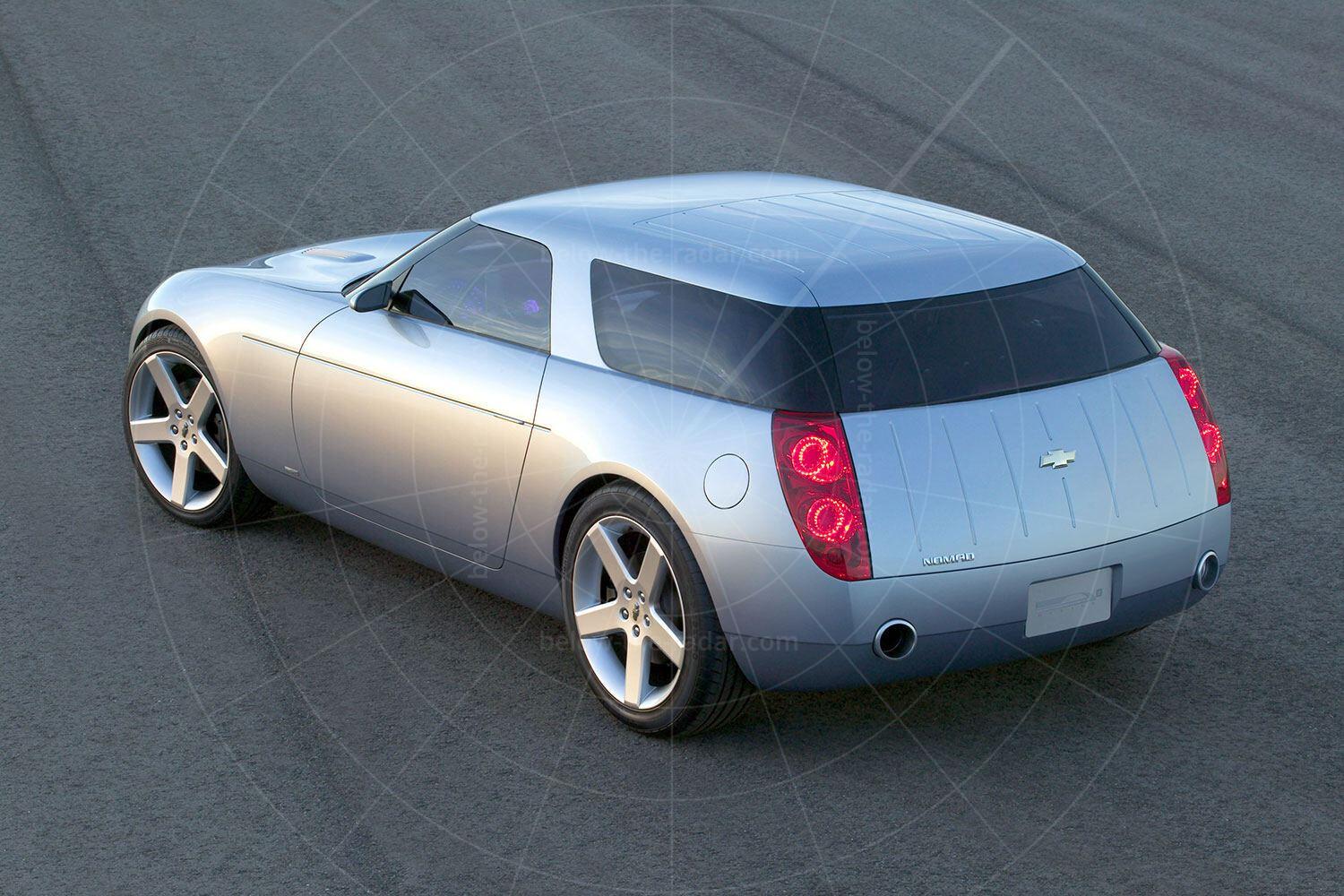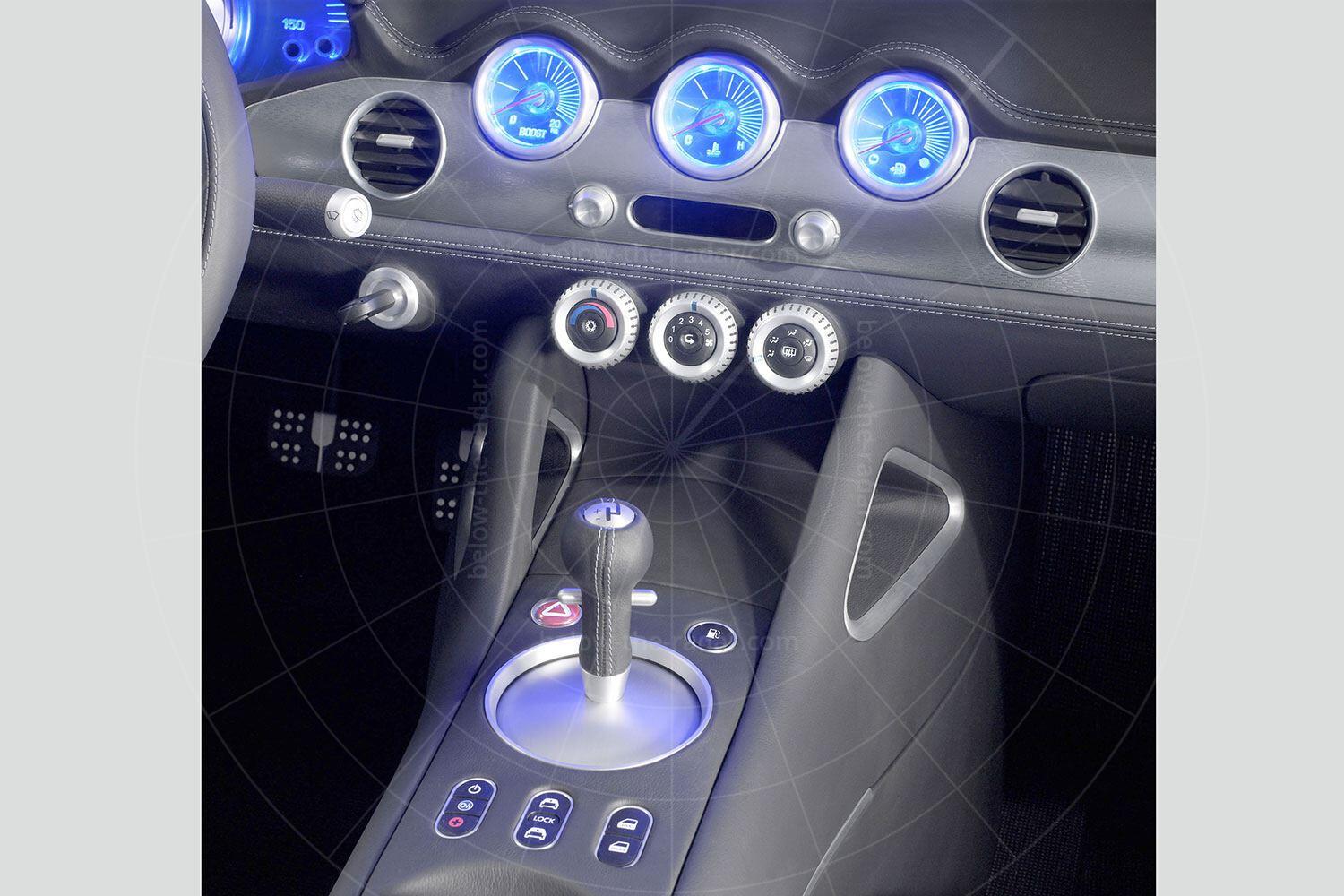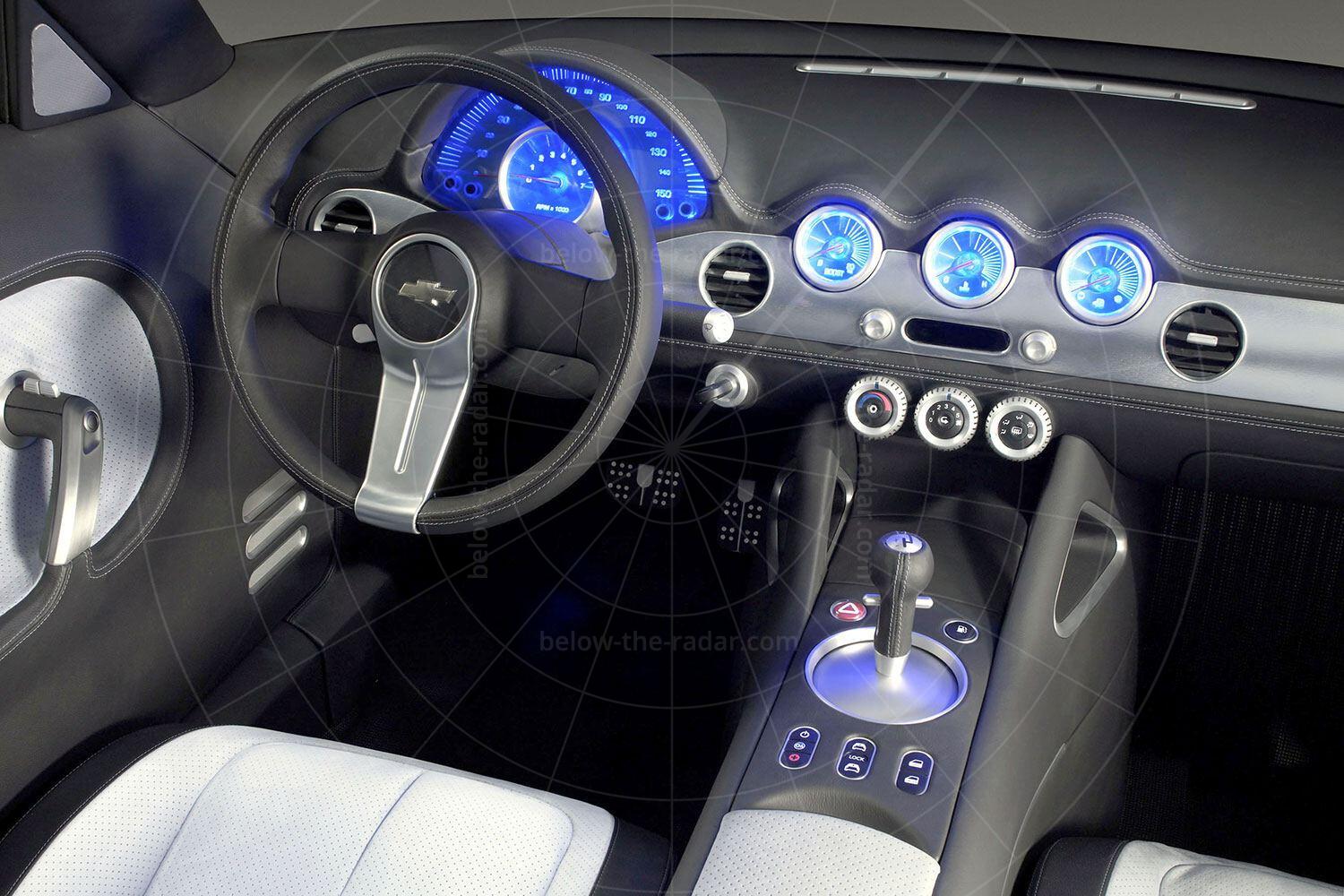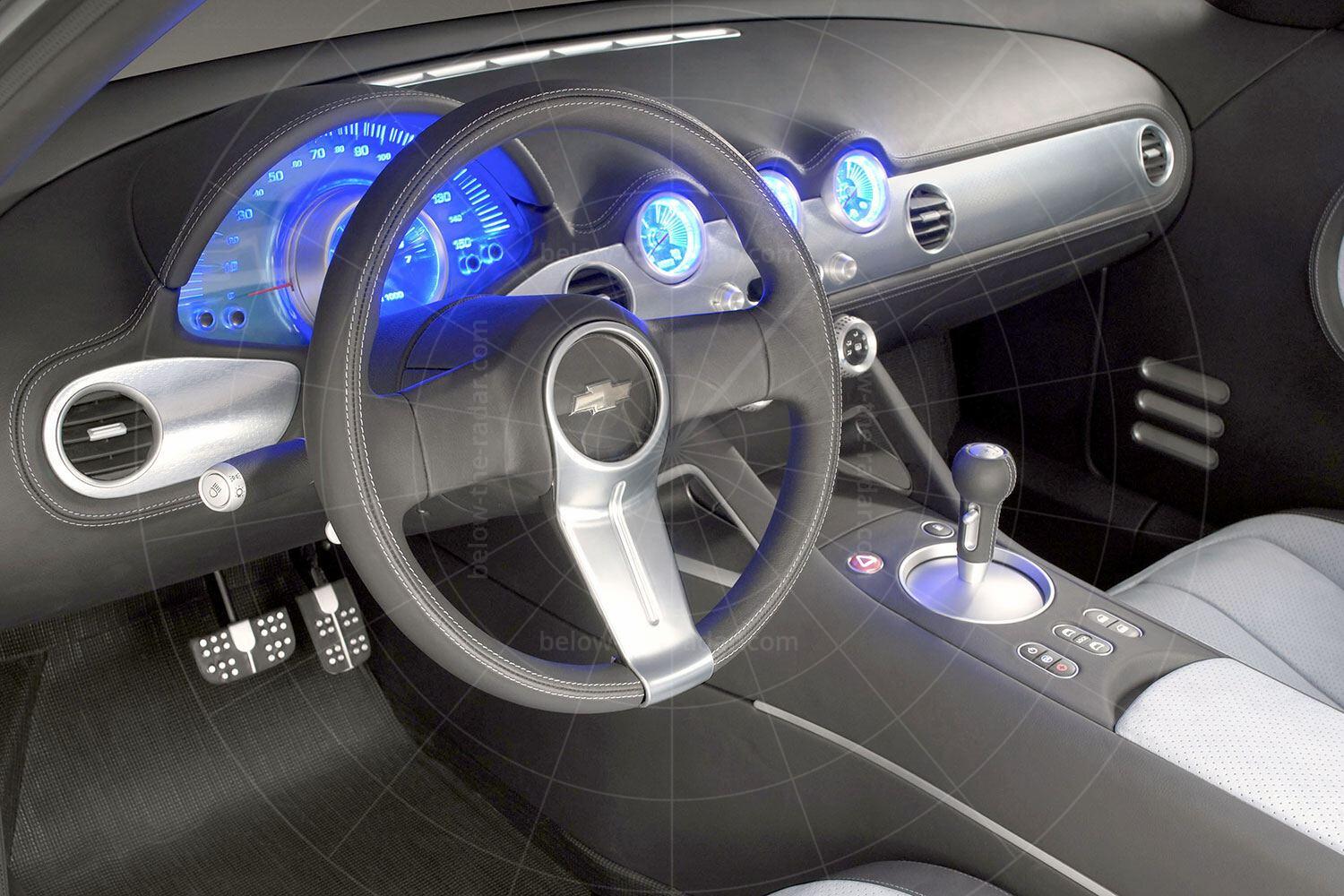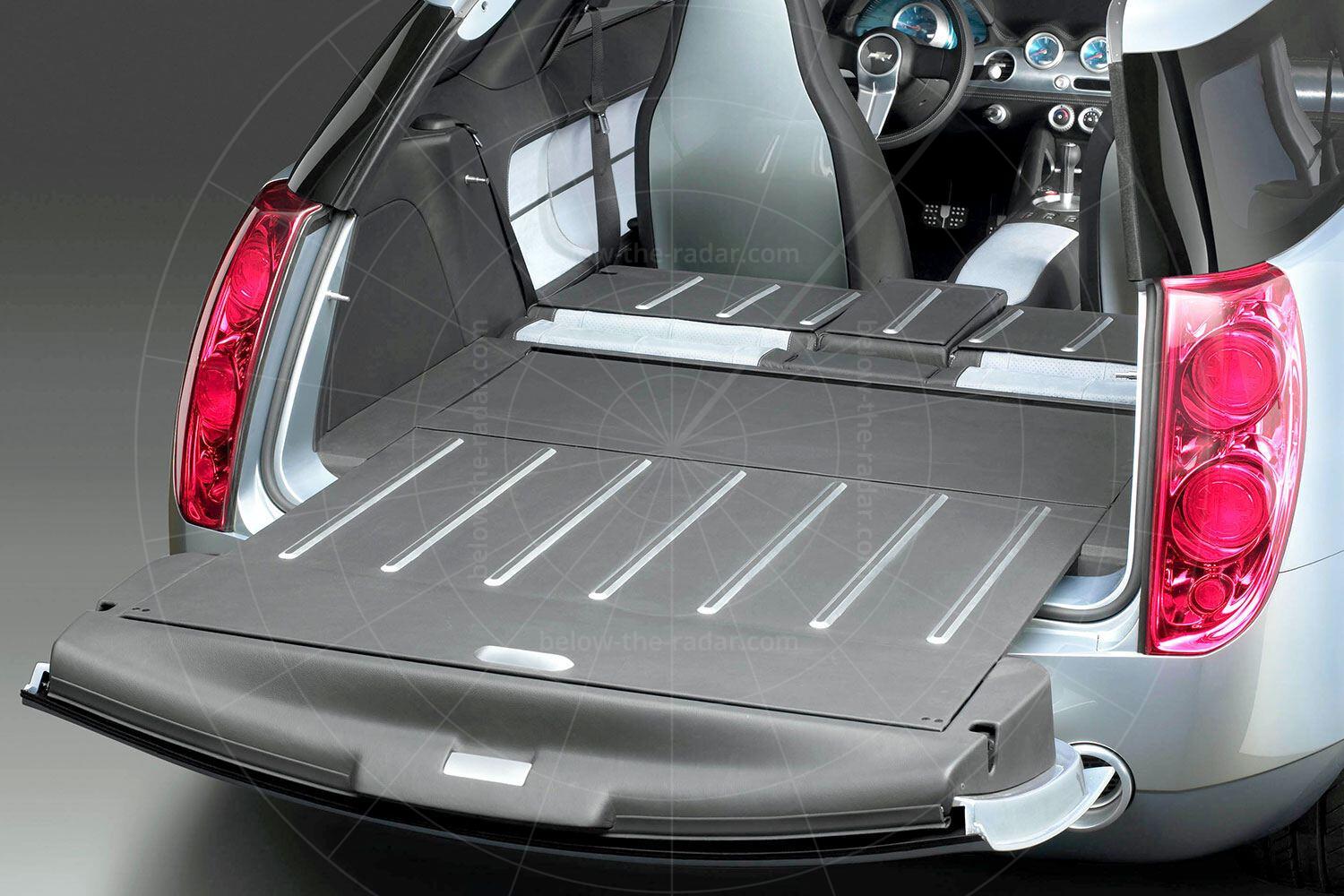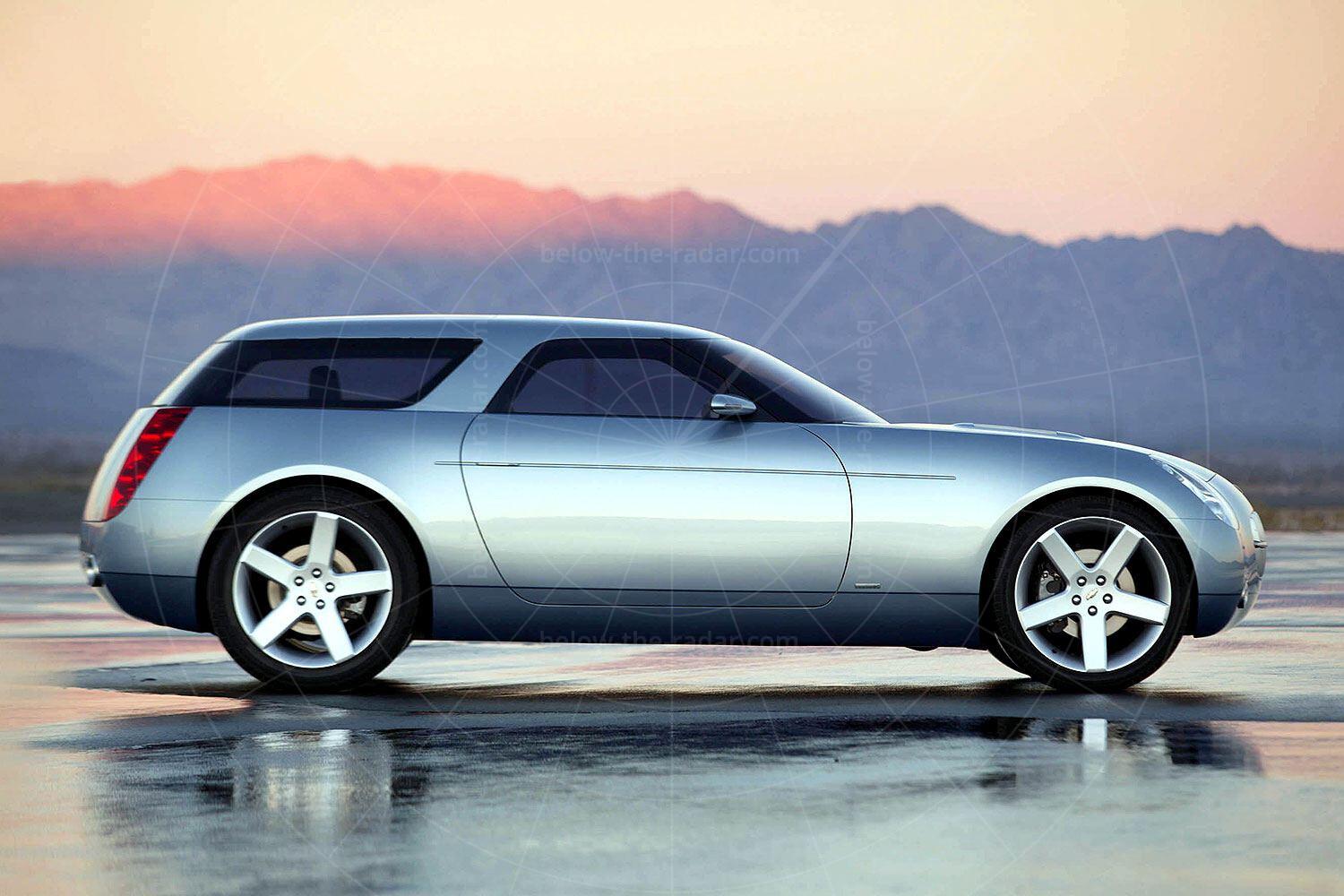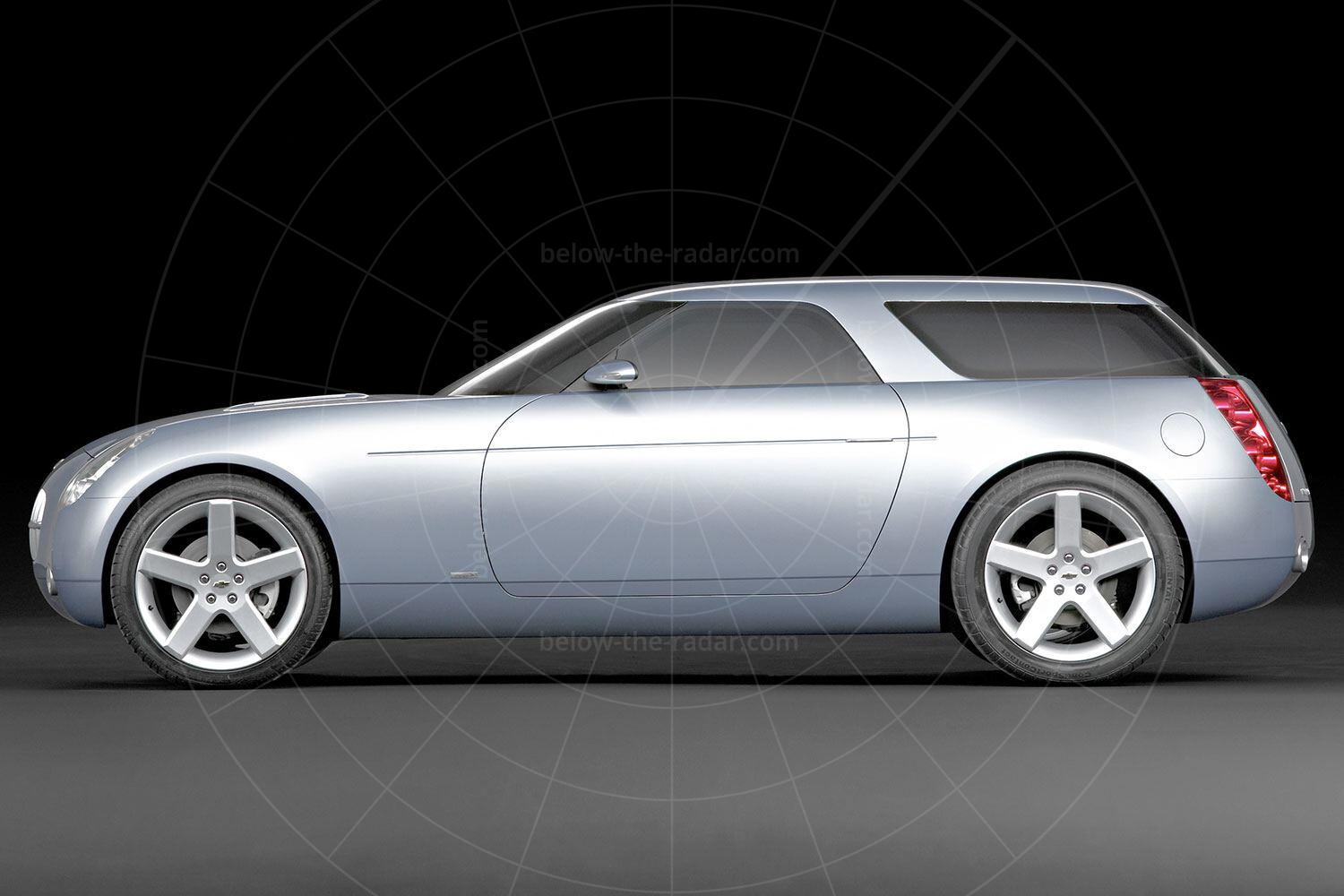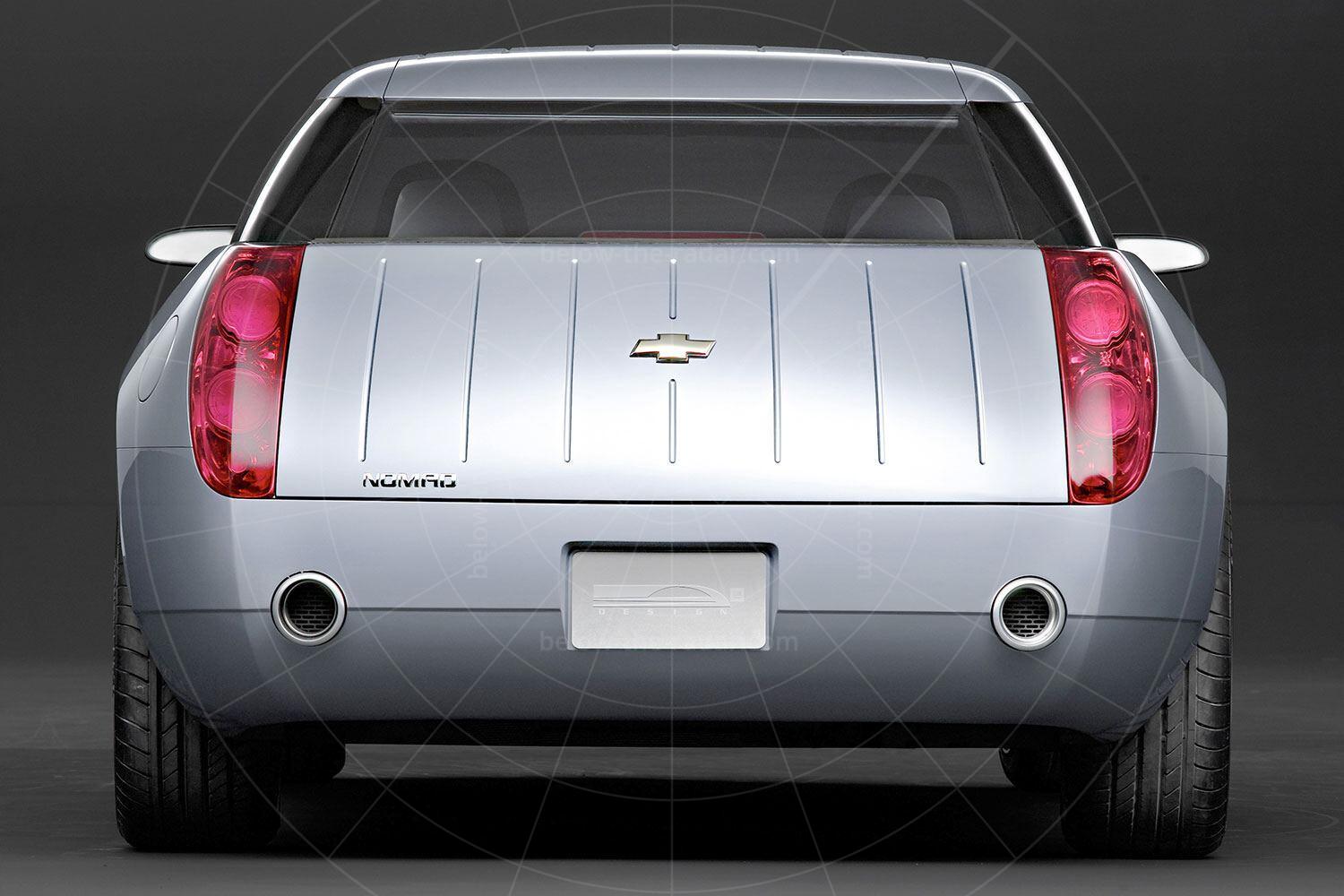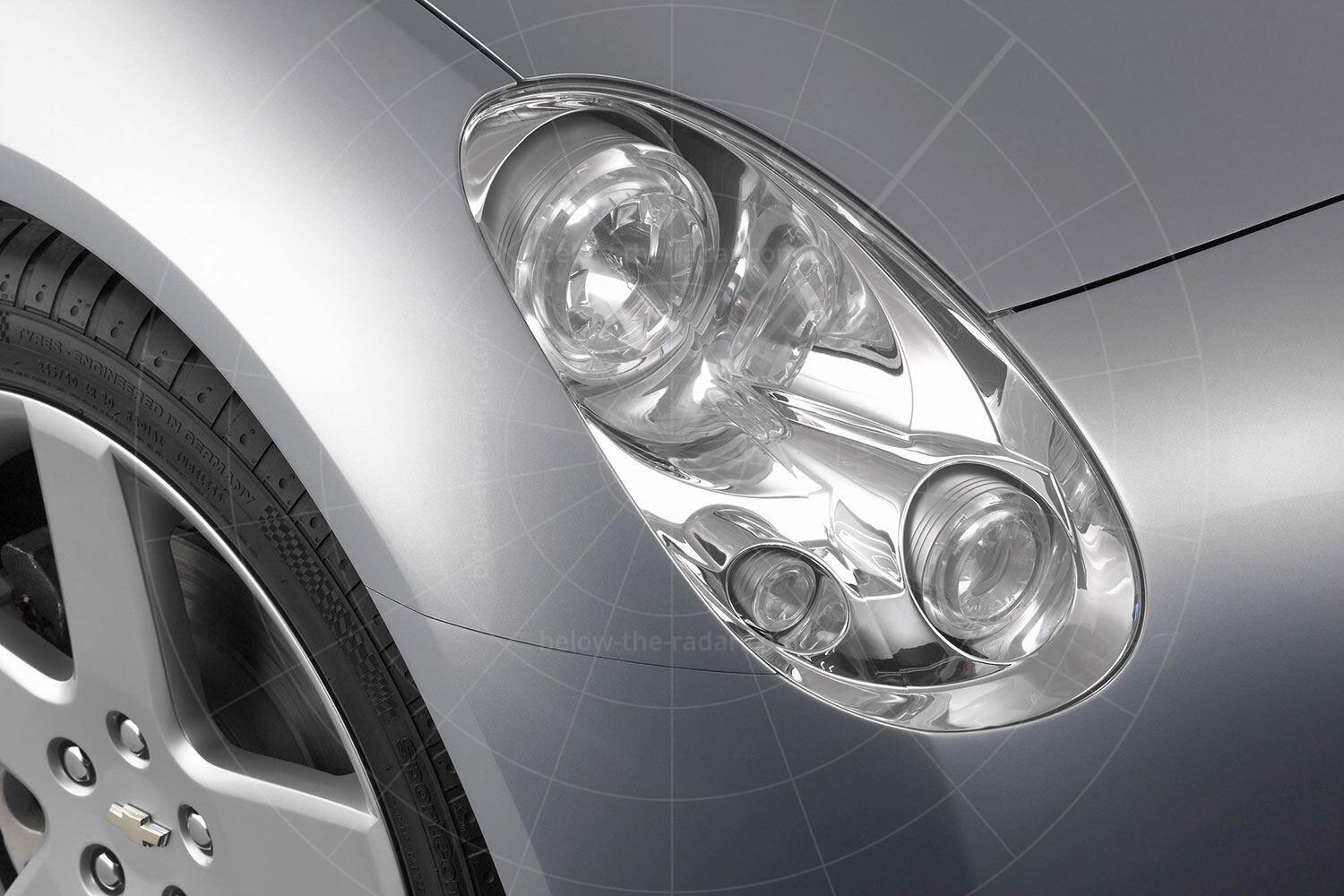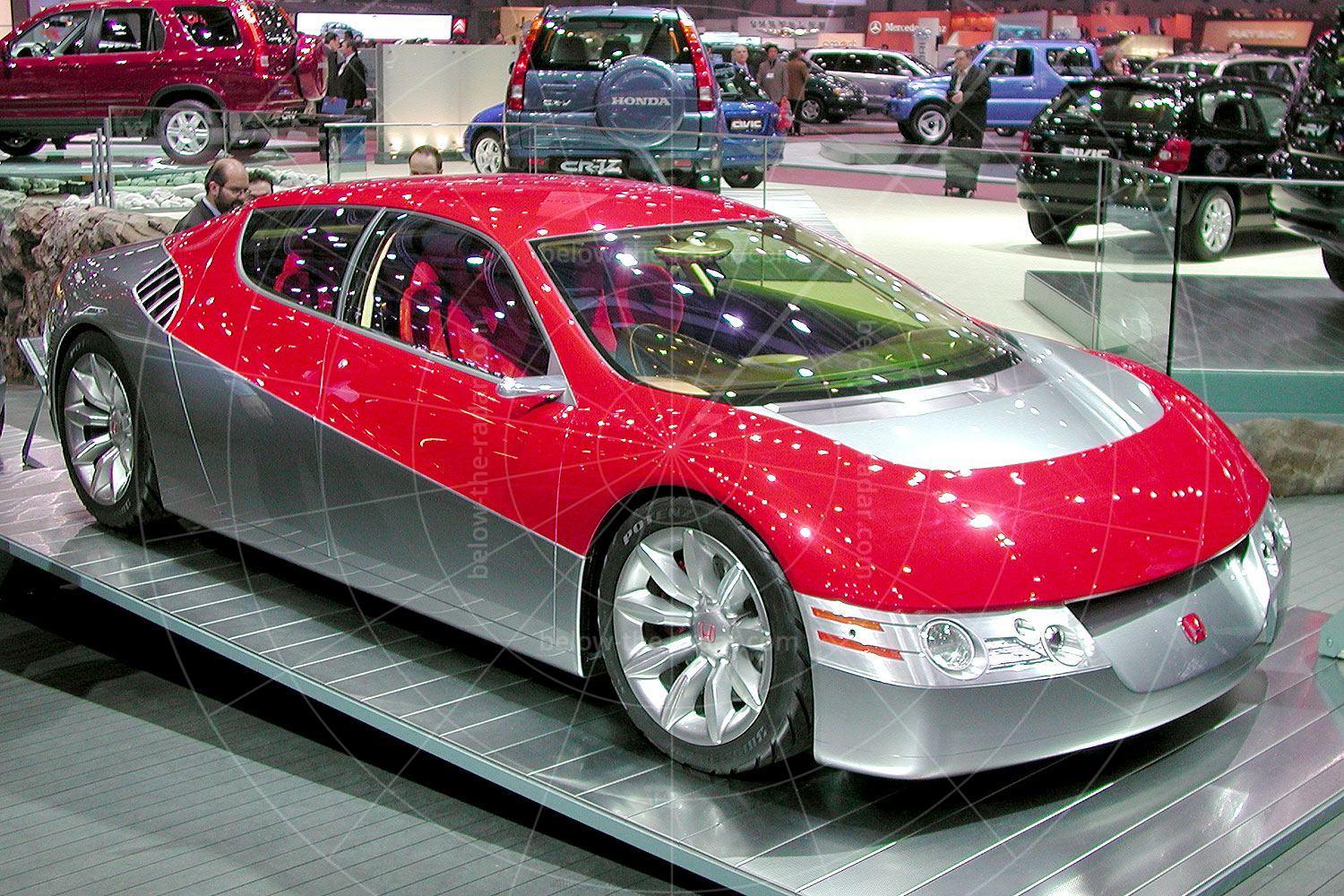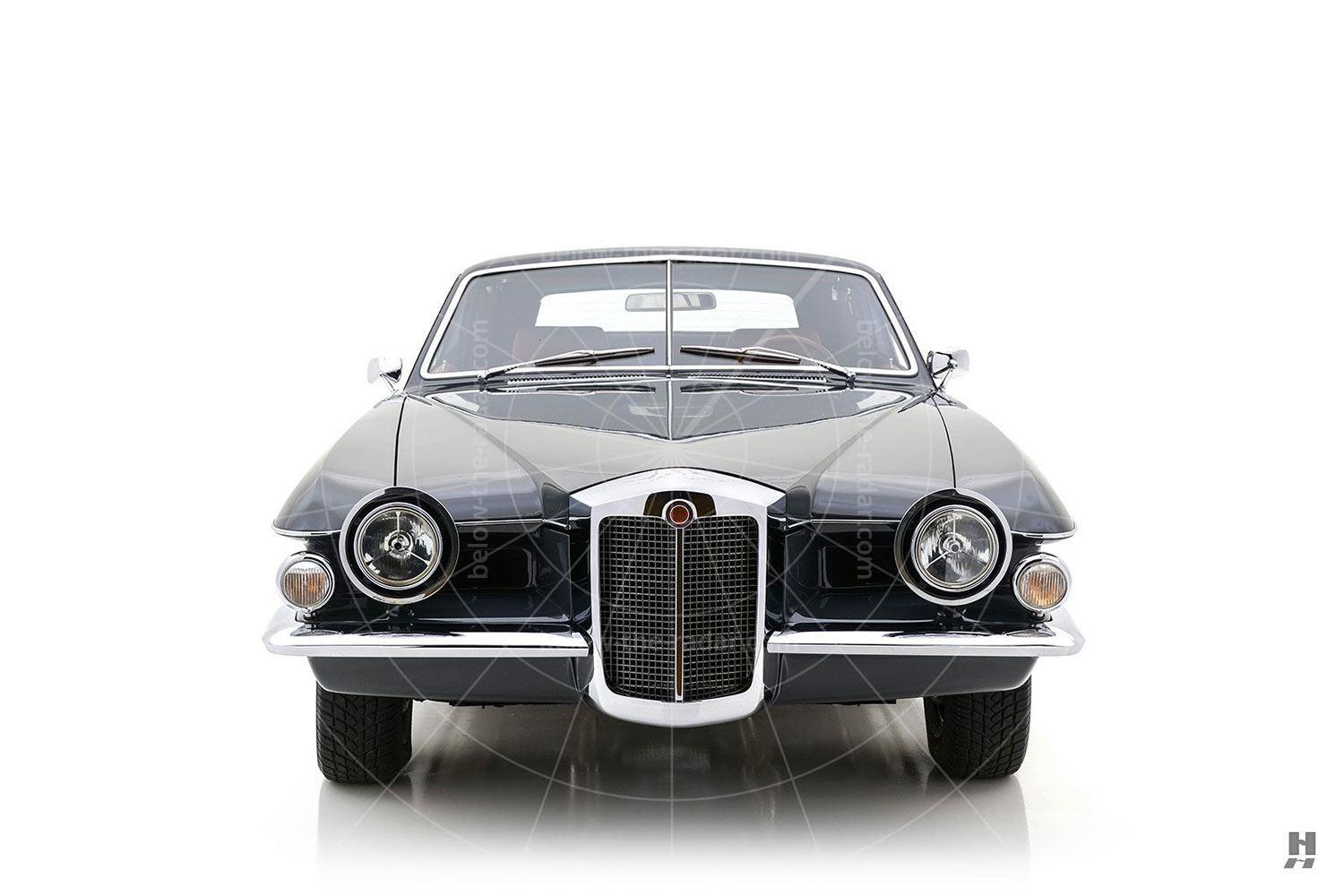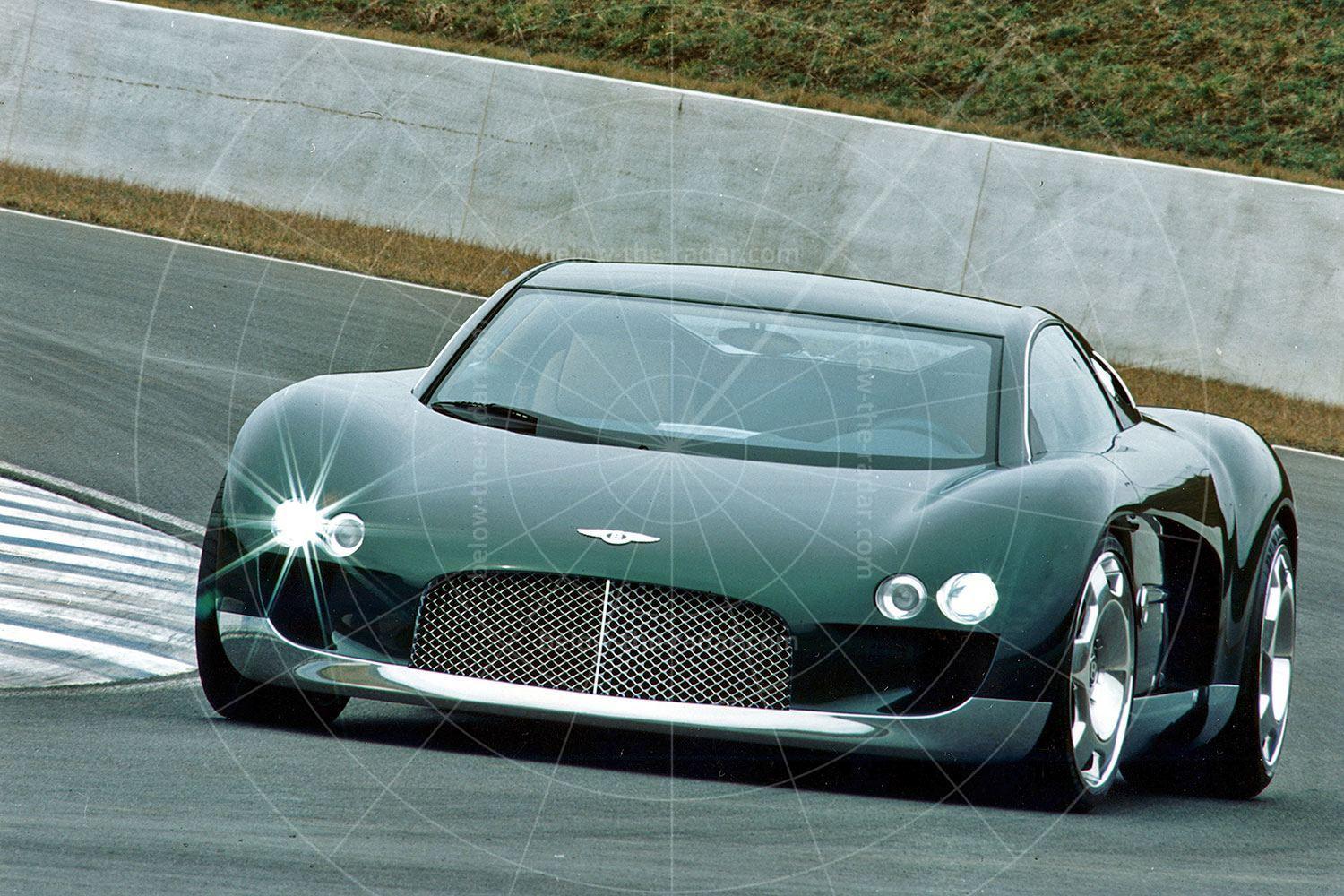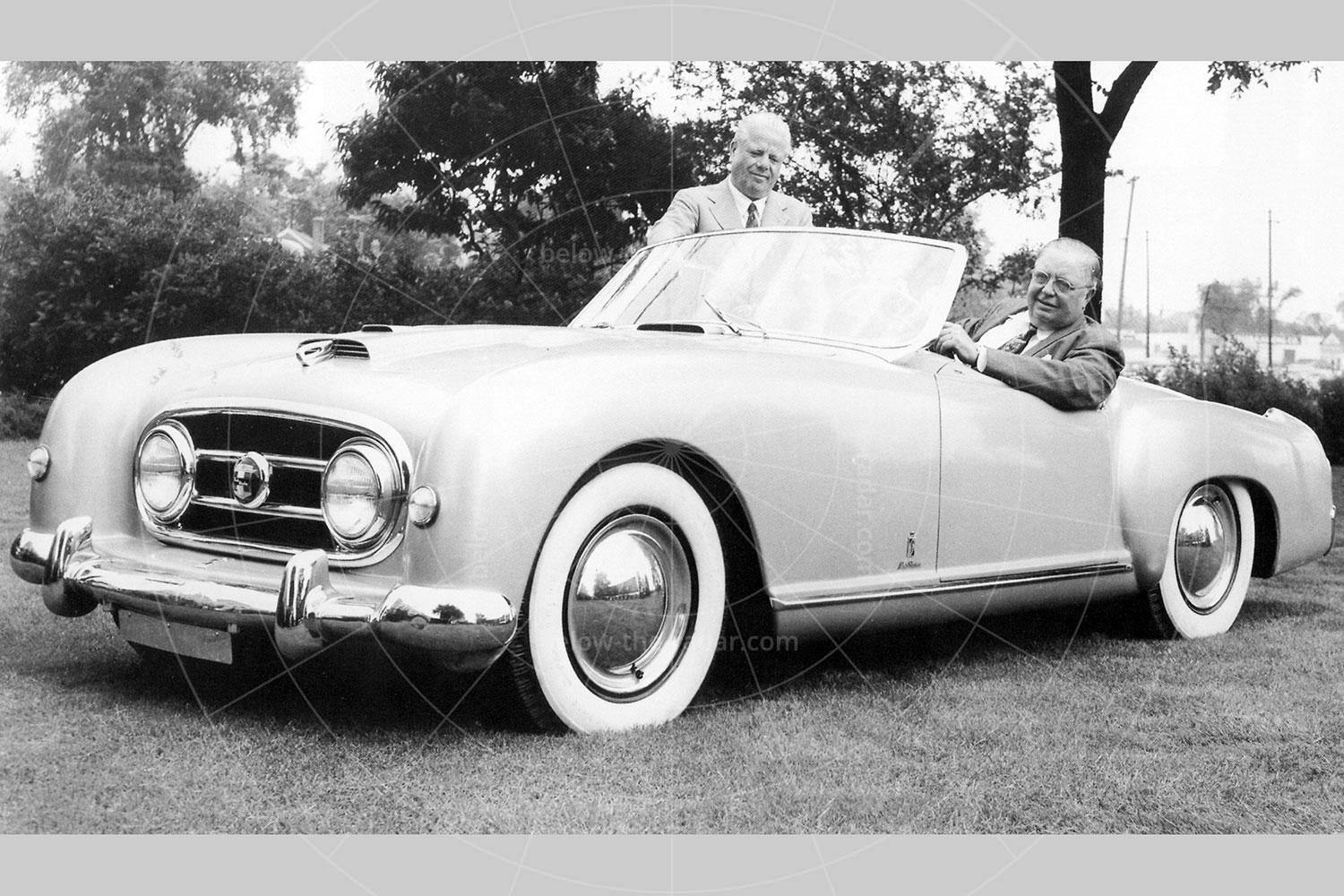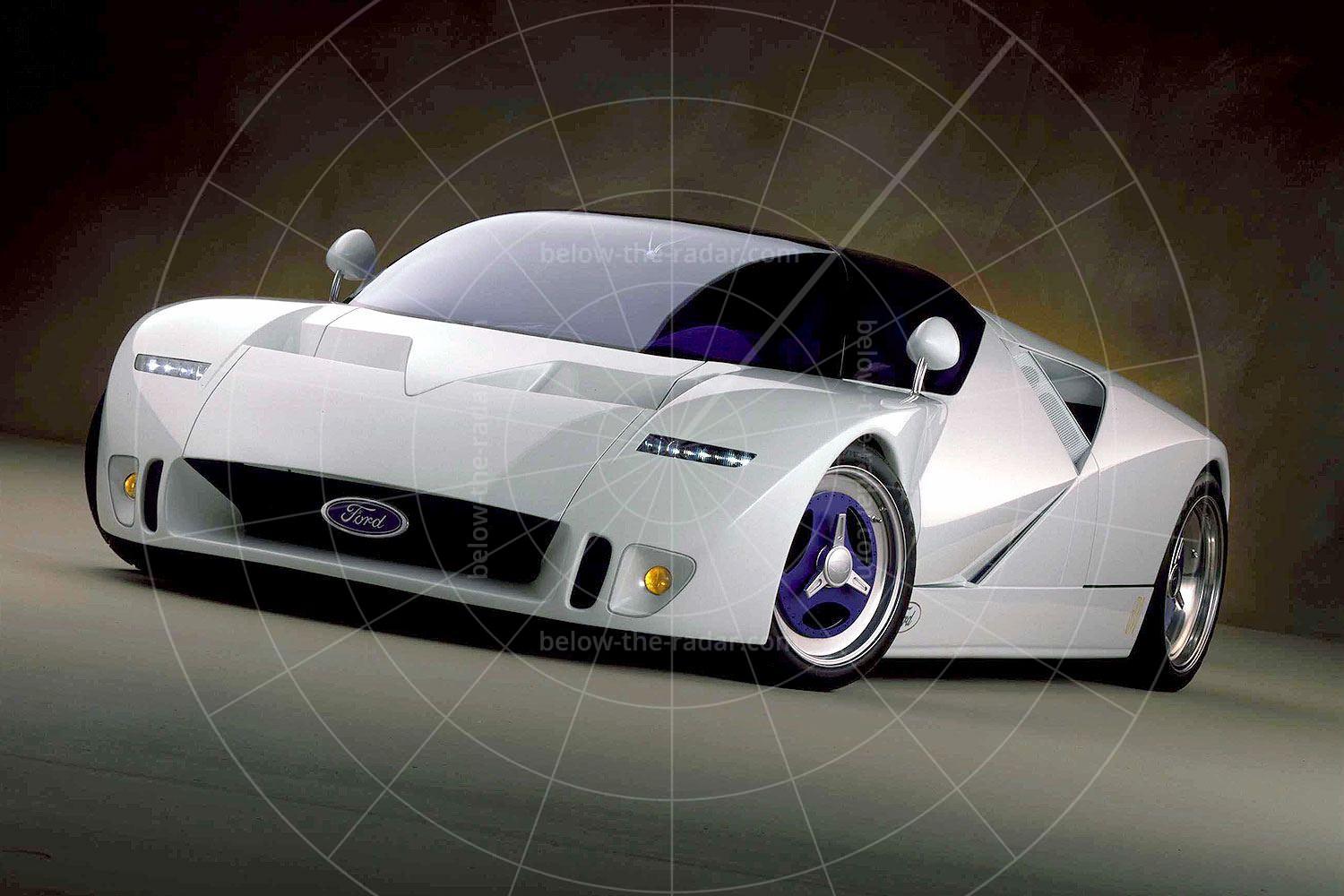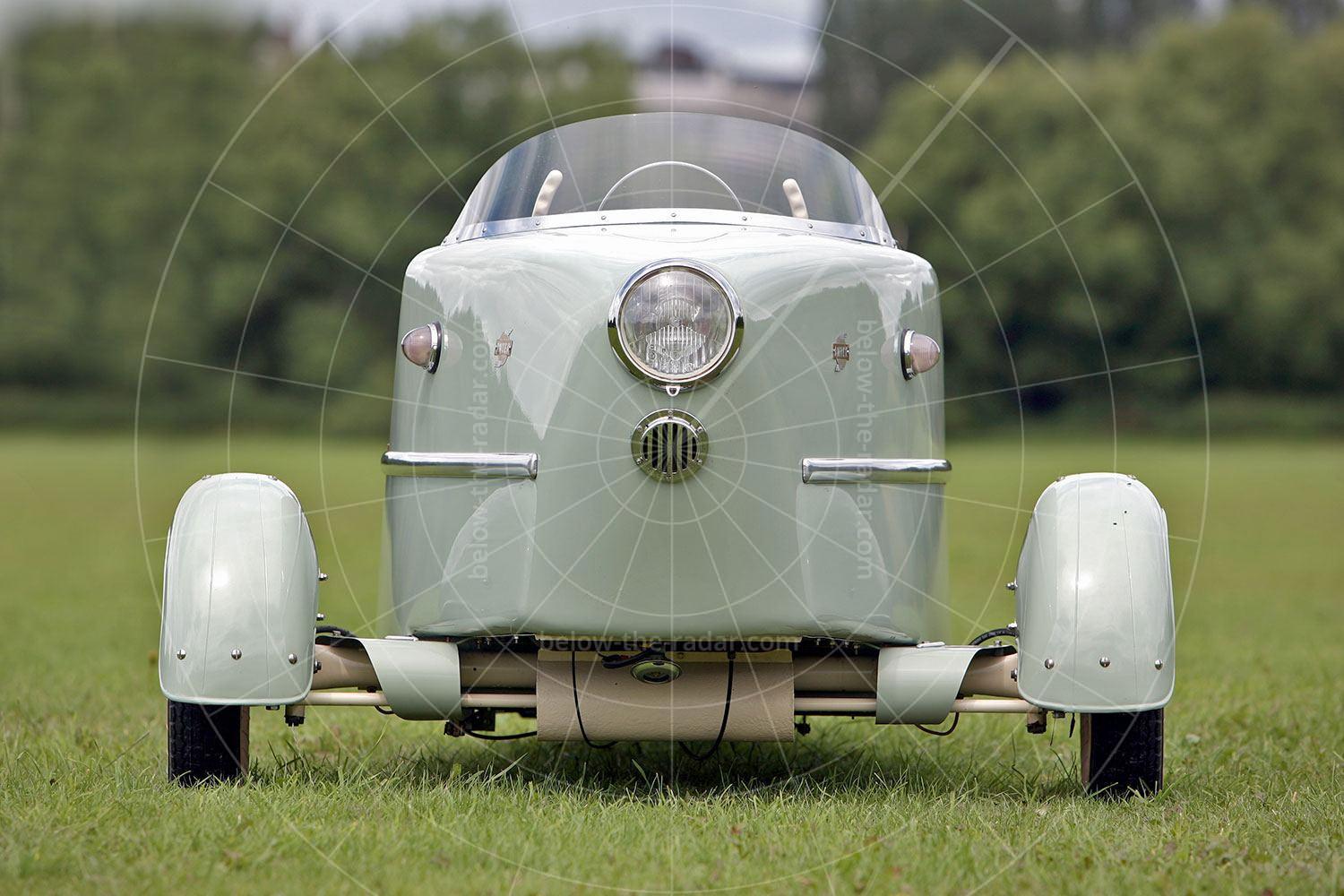Chevrolet introduced the Nomad estate, or station wagon, to its US range in 1955. One of the many variants of ‘Tri-Chevy’ offered between 1955 and 1957, the Nomad went on to become a true icon and one of the more collectible US classics. Large, luxurious and stylish, the Nomad’s classic styling stood the test of time far better than many of its contemporaries, so it made sense for Chevrolet to revive the brand in 1999 with a new estate car concept.
Ugly but eye-catching with its sleek design, this Nomad for the 21st century looked like a three-door station wagon, but actually packed neat sliding rear doors on each side for easier entry and exit. But it was ultimately doomed to be forgotten as the design wasn’t especially cohesive, unlike the all-new Nomad concept of 2004.
While earlier Nomads – both concept and production – were generously proportioned, the 2004 edition was far more compact. The reason for this Nomad's size was the unexpected success of the BMW Mini in the US: it seemed that being small no longer meant an automatic sales handicap. The Nomad was designed to appeal to drivers of any age, just like the Mini – and just like that car there was plenty of space inside, despite the diminutive proportions.
Also just like the Mini, the new Nomad was designed in Great Britain, under the watching eye of GM’s design director Simon Cox, but it was built by Pininfarina in Italy, so it was a truly international effort. However, while the Nomad may have made perfect sense on so many levels, GM ultimately decided not to put it into production. Unusually, while the Nomad effectively signalled an intention to take the Chevrolet brand upmarket, GM actually went the other way and turned this division into its budget brand. And sadly, while the Nomad worked brilliantly in concept form, watering it down significantly for production would have just created a major disappointment.
The original Chevy Nomad concept of 1954 used the newly introduced Corvette chassis for its basis. In the same way, the 2004 concept took a new platform and used it to show what was possible. In this case it was GM’s new Kappa platform, which meant there was a turbocharged four-cylinder engine up front, which drove the rear wheels via an electronically controlled five-speed automatic transmission.
The engine packed a useful 250bhp, through the use of variable engine valve timing, valve lift and duration which could be adjusted throughout the rev range to improve fuel economy, emissions and performance. As such, the Nomad’s powerplant was significantly more powerful than was to be expected, and with the power going to the rear it was clear that driving enthusiasts were the ones being targeted. After all, in this segment it was much more usual to have the power going to the front wheels; such a configuration means not only more efficient packaging, but also lower production costs.
GM’s HydraMatic gearbox was also a very neat transmission as it featured a fully automatic mode, or the driver could flick through ratios sequentially by tapping on the gear shift; a system that would become the norm in subsequent years.
Because the Nomad was a showcase for some of GM’s new production technologies and components, it wasn’t the tech-fest that it might have been. Indeed, aside from some of the exterior and cabin detailing, there was no reason why the Nomad couldn’t have gone into production in this form, even if the basic specification may have had to be watered down a bit.
Unsurprisingly, the 2004 Nomad used a variety of styling devices that directly referenced the original, iconic production car. These included the ribs set into the roof panel as well as the chrome strips on the outside of the tailgate; subtle, yet effective.
But this wasn’t just a rehash of an earlier design, as items like the flush glazing plus the integral bumpers and grille were a world away from anything made half a century earlier. So too were the LED lights, which were very powerful despite being extremely compact – and they looked high-tech too, when illuminated.
While the original Nomad had size on its side so it could accommodate pretty much anything you threw at it, the new one had to be more cleverly designed if it was to be at all practical. To that end there was a removable rear roof panel as well as a tailgate which could be folded for the accommodation of really bulky items. To aid the stowing and removal of luggage there was also a neat sliding cargo floor, so items could be pushed in and pulled out more easily.
Much more interesting than ultimate practicality though was the set of 20-inch wheels, which really were ridiculously oversized, but they also looked great when wrapped in ultra-low profile tyres. Indeed, the Nomad’s design – both overall and in detail – worked just brilliantly, so it’s a shame that Chevrolet never put it into production.
| Vital statistics | |
|---|---|
| Debut | Detroit, 2004 |
| Design director | Simon Cox |
| Engine | Front-mounted, 2.2-litre, turbocharged, 4-cylinder |
| Transmission | 5-speed sequential manual, rear-wheel drive |
| Power | 250bhp |
| Torque | 240lb ft |

